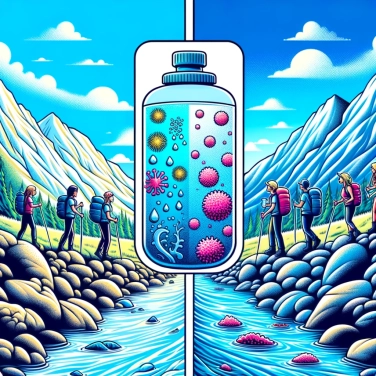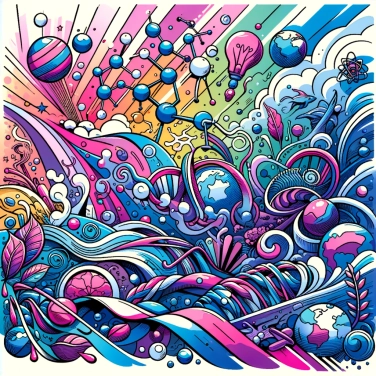Hikers should avoid drinking water from mountain rivers without purifying it because it may contain parasites, bacteria or viruses from external sources, which could lead to diseases such as gastroenteritis or typhoid fever.

Even though the water of a mountain stream appears as clear as crystal, it can host invisible but dangerous pollutants. Sometimes, there are agricultural chemicals, including traces of pesticides or fertilizers from farming activities at higher altitudes or upstream. Heavy metals like lead, mercury, or cadmium can also be found due to historical mining activities, industrial processes, or runoff. Some rivers even unknowingly collect micropollutants from domestic or industrial discharges, such as pharmaceutical residues. All these contaminants remain insidiously present despite the clear appearance of the water.
The clear water of a mountain river is unfortunately not always as clean as it appears. You may find small unpleasant creatures like Giardia, a parasite that causes diarrhea and stubborn stomach aches, or bacteria like Escherichia coli, responsible for rather unpleasant digestive troubles. Another classic example is the parasite Cryptosporidium, discreet but tough, resistant even to certain chemical purification methods. These microbes enter the water through fecal matter from animals or humans upstream, and even a seemingly isolated river can easily be contaminated. In short, these organisms invisible to the naked eye can completely ruin your hike and your digestion for several days, or even longer.
Drinking water directly in the mountains carries the risk of severe digestive issues. You can quickly experience classic symptoms such as nausea, vomiting, stomach cramps, or acute diarrhea. Some bacteria or parasites can also cause a sudden fever accompanied by extreme fatigue. These issues sometimes appear only a few hours after consuming contaminated water, but it can also take several days before they actually manifest. In any case, it's not the ideal time to get sick far from home while hiking!
Drinking contaminated water regularly can cause serious long-term damage to your body. Certain bacteria and parasites, such as Giardia or Cryptosporidium, can lead to chronic inflammation in your intestines. You may then experience recurring digestive issues, persistent abdominal pain, and difficulty properly absorbing nutrients. Your immune system can also gradually weaken, making you more susceptible to other illnesses or repeated infections. Some repeated contaminations can even lead to complications with the kidneys or liver. In short, don’t take this lightly: purifying your water is the best way to protect your health in the long run.
One of the simplest solutions is to boil water for at least one minute: it kills most dangerous microbes and parasites. Another nice option to take backpacking is portable filters: they eliminate quite a few pollutants and bacteria, but be careful, some still allow viruses to pass through. To complement this, chemical purification tablets like those based on chlorine or iodine also work well; they are practical and lightweight, but you have to tolerate the not-so-great taste they give to the water. Finally, systems using UV rays are becoming more and more common: effective and fast, but they still require batteries or a full charge. Each method has its strengths and weaknesses: the choice mainly depends on your needs, the duration of your hike, and of course, your personal comfort.
Boiling water for at least one minute is an effective method to eliminate most bacteria, viruses, and parasites present in river water.
The melting of snow can carry into the mountain water residues from human activities located several kilometers upstream, such as pesticides, heavy metals, or hydrocarbons.
There are lightweight portable filters suitable for hiking that ensure rapid water purification, capable of removing up to 99.999% of microbiological contaminants.
Chemical disinfection using chlorine, iodine, or chlorine dioxide tablets is very convenient when there is a lack of time or equipment to filter or boil water on site.
No. Even if you melt snow or ice while hiking, it is advisable to purify the obtained water because it may be contaminated by impurities or microorganisms accumulated on the surface.
Some microorganisms can remain viable for several days or even weeks in untreated water, especially when kept at a favorable temperature. Therefore, it is essential to systematically purify water taken from nature.
Yes. In an emergency situation, boiling water for at least one minute (or three minutes at high altitude) is a simple, quick, and effective method to eliminate the majority of pathogens.
Even if the water appears clear and fresh, it may contain invisible bacteria, parasites, or contaminants. The presence of nearby animals, waste, or agricultural runoff upstream should alert you to an increased risk of contaminated water.
Among the most effective methods are portable water filters, purification tablets, and boiling for at least one minute (or three minutes if the altitude exceeds 2000 meters).

No one has answered this quiz yet, be the first!' :-)
Question 1/5